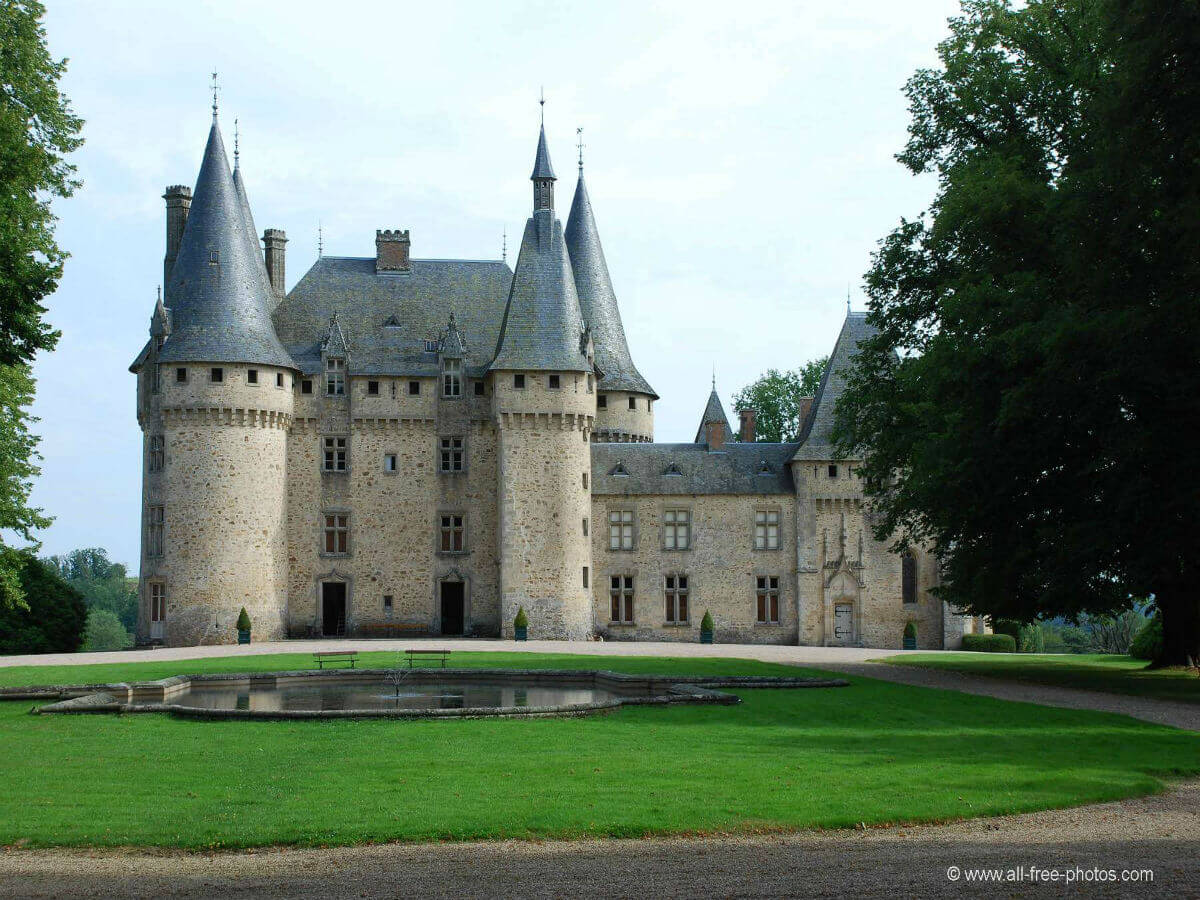Tour Package
Slovakia Tour Packages
SUPER DEAL PRICE
STARTS FROM
per person on twin sharing
ATMs are widely available throughout Slovakia.
Credit cards are accepted almost everywhere.
Finding a bank is hassle-free in Slovakia.
The legal drinking age in Slovakia is 18.
Slovakians are friendly and known for hospitality.
Prices are typically cheaper in July.
Slovakia - Visitors Statistics

Annually
57,00,000
Male51%
Female49%
By Purpose
Couples
For Newlywed Vacations
Family
For Family Vacations
Top Visitors from India
Delhi
Mumbai
Bangalore
Chennai
Kolkata
Pune
Jaipur
Ahmedabad
Lucknow
Hyderabad
All You Need to Know About Slovakia Tour
Thanks to its natural beauty, cultural heritage, delicious cuisine, and affordability, Slovakia is considered a hidden gem in Europe. Nestled in Central Europe, the country is famed for its unique architecture and quaint cities. While the castles of Slovakia will mesmerise you, the national parks will appease your nature loving heart. Our Slovakia tour packages let you explore this country’s art, architecture, and culture.
Why Choose GT Holidays
At GT Holidays, we understand the modern traveller like no other. We know that they’re looking for experiences beyond mere sightseeing. Our customised Slovakia tour packages are designed after carefully considering the client’s budget, interests, food preferences, health, and even activities they’d like to explore.
While Slovakia is known for its castles and mountains, our itineraries aim to help you explore the hidden and untouched gems of the country. In addition to focussing on major cities, we also help you discover the smaller towns and villages home to some of Slovakia’s most spectacular natural landscapes. For instance, if you’re a wine connoisseur, our tour representatives will ensure you visit the country’s wine producing regions for wine sampling.
Dos and Don’ts For Indian Travellers
- Don’t enter someone’s home with shoes on; it is considered a sign of disrespect. In this regard, the Slovaks are similar to Indians.
- When you visit someone in Slovakia, remember to bring a gift, flowers, pastries, or a bottle of wine. It shows that you value the kindness and generosity of the hosts.
- It is inappropriate to discuss sensitive subjects such as politics and religion in public settings.
- If you’re having a meal with the locals, remember to look everyone in the eye and toast them to good health.
- Don’t assume that everyone in Slovakia speaks English, especially in the less populated or rural areas.
- Install a translation app or carry an English to Slovak dictionary with you to start conversations with locals who don’t speak English.
- Don’t refuse food or drink offered to you in Slovakia, as it is considered rude, especially in rural areas where the locals brew their liquor.
- Remember that men in Slovakia greet each other with a handshake, and women greet each other with air kisses.
- Don’t forget to maintain eye contact while holding conversations with the Slovaks.
- Don’t be disheartened if a Slovak seems quiet during initial conversations. They often take time to trust people, but they eventually open up.
- Don’t try to enter a public mode of transportation till all the passengers inside have gotten out.
Shopping In Slovakia
Before you leave for your vacation, we suggest keeping ample space in your luggage because you will return with a delightful mix of souvenirs. From delicious snacks and drinks to traditional handicrafts, here are some of the must-buy things in Slovakia to watch out for:
What To Buy
Slovak Wine
Southern Slovakia is the country’s wine producing region, which is further divided into six unique wine growing areas: Malokarpatská, Južnoslovenská, Tokajská, Nitrianska, Stredoslovenská, and Východoslovenská.
Whether you like red, white, or rosé, Slovakia has several varieties of wine. If you like red wine, go for the Frankovka Modra. Try the Rulandske Biele if you prefer white wine, and get the Alibernet rosé if rosé is your preferred kind of wine. The Grand Cru Wine Gallery in the Old Town of Bratislava is perfect for trying different wines.
Carved Wooden Crosses
Carved and tall wooden crosses can be found along the roadsides and in front of churches and other religious institutions in Slovakia. Decorated with traditional folk patterns and vibrantly coloured paints, these crosses signify various Biblical values and stories. While you probably don’t want to bring home a five-foot-tall cross, you can request the craftsmen to produce smaller versions to buy as souvenirs for friends and family.
Slovak Honey
Due to its high quality and supreme taste, Slovak honey is a beloved souvenir among tourists. A creamy variety of honey is also made using crystallised honey. Slovak mead or honey wine, made using forest honey, is equally popular. Both sweet and dry varieties of honey wine are often served after dinner in Slovakia. Remember to also look for honey covered nuts and other flavoured honey during your trip.
Slivovica
Slivovica is a potent double distilled plum brandy with an alcohol content ranging from 40% to 50% and aged for 2 to 10 years in an oak barrel. The drink is integral to Slovak culture and is used at all important events, including marriage, baptism, and even death. There are various flavours of this liquor, including apricot, raspberry, and blueberry.
Valaška
Valaška is an ornamental shepherd’s axe. However, instead of cutting down trees, it is used for many ceremonies in Slovakia. It often appears in traditional folk dances and is also used as a walking cane. Skilled craftsmen are known to use this ornate shepherd’s axe. The detailed design on the axe makes it a perfect souvenir.
Bryndza Cheese
Bryndza is a white, creamy, and crumbly sheep cheese used in Slovak cuisine. This is a unique souvenir you might want to bring back home. Carrying it in an aircraft can be tricky, but you can buy some while enjoying your trip and enjoy it while on tour. The EU granted bryndza protected status, and it is the main component of Slovakia’s national dish, bryndzove halusky. Did you know the bryndza made in summer is a different product than the one made in winter? The summer variety is considered better as the sheep graze on high-nutrient grass and spring flowers.
Corn Husk Dolls
Originally created around the 1950s, corn husk dolls are made using dried corn husks. They are popular souvenirs, especially for children. The dolls often don traditional folk attire and represent numerous aspects of Slovakia’s rural life. You can grab these dolls from any store in the country.
Tatratea
Tatratea is a tea liqueur available in six distinct flavours with varying alcohol content levels. Locals often consume it when they go hiking or skiing.
Horalky
Horalky is one of those sweet Slovak treats you will want to take back home in plenty. These wafer biscuits have a peanut filling and a cocoa coating. They are often called mountain cakes since Slovaks carry them during mountain trips. There are various varieties available, including peanut, hazelnut, chocolate, milk, and coconut. The peanut flavour, however, is the most popular.
Traditional Folk Embroidered Clothes
Traditional folk embroidered clothes available in bright colours and folk patterns are some of the best Slovak souvenirs you can buy for friends and family. You can buy dresses, tank tops, and T-shirts from stores across the country. We suggest you pay attention to the material so that you don’t compromise on quality.
Where To Shop
- Textile House: For vintage and retro clothes.
- Aupark Shopping Center: For clothes and popular brands like Tommy Hilfiger, Lacoste, H&M, and Mango.
- Eurovea Galleria: For entertainment options, eateries, and luxury international brands.
- Kompot: For bags and pop culture t-shirts with designs based on TV shows, Slovak culture, and funny slogans.
- Mileticova Market: For handicrafts, teas, flowers, and fresh produce.
- Avion Shopping Park: For clothes, shoes, accessories, and toys.
- Artforum: For books.
- Úľuv: For fabrics and traditional handicrafts.
Things To Remember When Shopping In Slovakia
- While the bigger stores in Slovakia accept credit cards, keeping cash handy when shopping at smaller stores is better.
- The street-side markets in Old Town have hidden shopping gems you must explore.
- Slovakia is a great place for seasonal sales. Look out for them if you’re travelling during the summer or during Christmas.
View All Slovakia Packages
Travel Tips

Visa Information
Check visa requirements before traveling, ensuring a smooth entry and compliance with destination regulations.

Health and Safety Tips
Prioritize health, stay hydrated, follow safety guidelines, and maintain personal hygiene for a secure journey.

Currency and Tipping
Familiarize with local currency, consider customary tipping practices for respectful and seamless travel experiences.
FAQs:
Book Your Dream Vacay Today!













